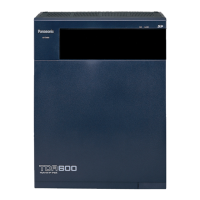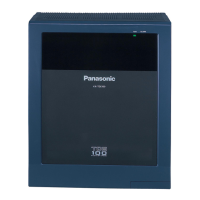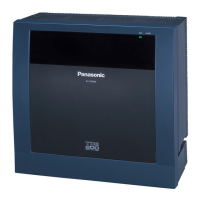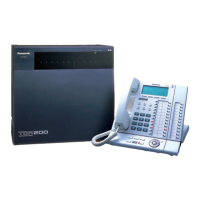What does "REGISTER UNIT" mean on Panasonic Telephone?
- TTara Ho DVMAug 27, 2025
If your Panasonic Telephone displays "REGISTER UNIT", it means the PS is not registered in the system. Consult your dealer.






What does "REGISTER UNIT" mean on Panasonic Telephone?
If your Panasonic Telephone displays "REGISTER UNIT", it means the PS is not registered in the system. Consult your dealer.
Why is my Panasonic Telephone PS not working?
If your Panasonic Telephone's PS does not work, it could be because the battery is empty. In this case, charge the batteries fully. If the PS has been cancelled or not registered, you should consult your dealer.
Why can't I dial on my Panasonic Telephone?
If you cannot dial on your Panasonic Telephone, it might be because the number you dialed is restricted by the system, so you should consult your dealer. Alternatively, the key lock mode might be set. To cancel the mode, press the Function button for about 2 seconds. Also, the radio channel might be busy or a radio communication error occurred, so try again later.
What does "CS Busy" mean on Panasonic Telephone?
If your Panasonic Telephone displays "CS Busy", it means the radio channel is busy. Please try again later.
Details various station-specific features and their usage.
Explains the use of account codes for call accounting and billing purposes.
Provides an overview of call forwarding types to extensions or external destinations.
Forwards all incoming calls to a pre-assigned extension automatically.
Forwards calls to another extension when the user's extension is busy.
Forwards calls to another extension if the user does not answer within a set time.
Forwards calls when the extension is busy or unanswered.
Forwards incoming calls to an outside party via CO or TIE line.
Allows placing intercom or outside calls on hold to handle other calls.
Explains transferring calls to extensions using screened or unscreened methods.
Describes transferring calls using a DSS button with One-Touch Transfer enabled or disabled.
Details transferring calls to an outside party via CO or TIE line.
Notifies users of a waiting call during an active call and allows managing the second call.
Explains establishing a three-party conference call.
Protects against interruptions during data communication by disabling features like Call Waiting.
Allows outside callers to access system features as if they were extensions.
Prevents interruptions by not receiving intercom and outside calls.
Allows overriding the 'Do Not Disturb' feature on another extension if permitted.
Locks the extension to prevent others from making outgoing outside calls.
Allows dialing pre-assigned emergency numbers regardless of restrictions.
Enables answering intercom calls without lifting the handset.
Describes how to make a call to another extension user within the system.
Monitors messages in a voice mailbox and allows answering the call during monitoring.
Leaves a notification for busy or unanswered calls, allowing the recipient to call back.
Makes calls or accesses features by touching a programmed button.
Summarizes ways to access a CO line for outward dialing.
Allows calling a pre-programmed party by simply going off-hook.
Automatically saves and allows redialing the last outside call made.
Resets station features to their default settings.
Allows storing up to 10 speed dial numbers at an extension for personal use.
Enables making calls using system speed dial numbers available to all extensions.
Sets an alarm tone to sound once or daily at a preset time as a reminder.
Temporarily overrides toll restriction by entering an account code before dialing.
Forwards calls to a Voice Processing System mailbox, indicated by the MESSAGE button.
Allows using calling privileges (Class of Service) at another extension and overriding restrictions.
Lists special features available to extensions assigned as Manager or Operator.
Allows Managers/Operators to clear the Live Call Screening password for any extension.
Explains setting or canceling Call Forwarding and Do Not Disturb features using the display.
Automatically logs incoming outside call information, allowing modification and callback.
Locks the display to prevent others from viewing incoming call log information.
Logs the last five CO calls made and allows making calls using the call log.
Provides access to system features listed alphabetically via the display.
Details station programming for DSS and PF buttons.
Explains transferring calls to extensions using the DSS button.
Provides guidance on resolving common problems and issues.











